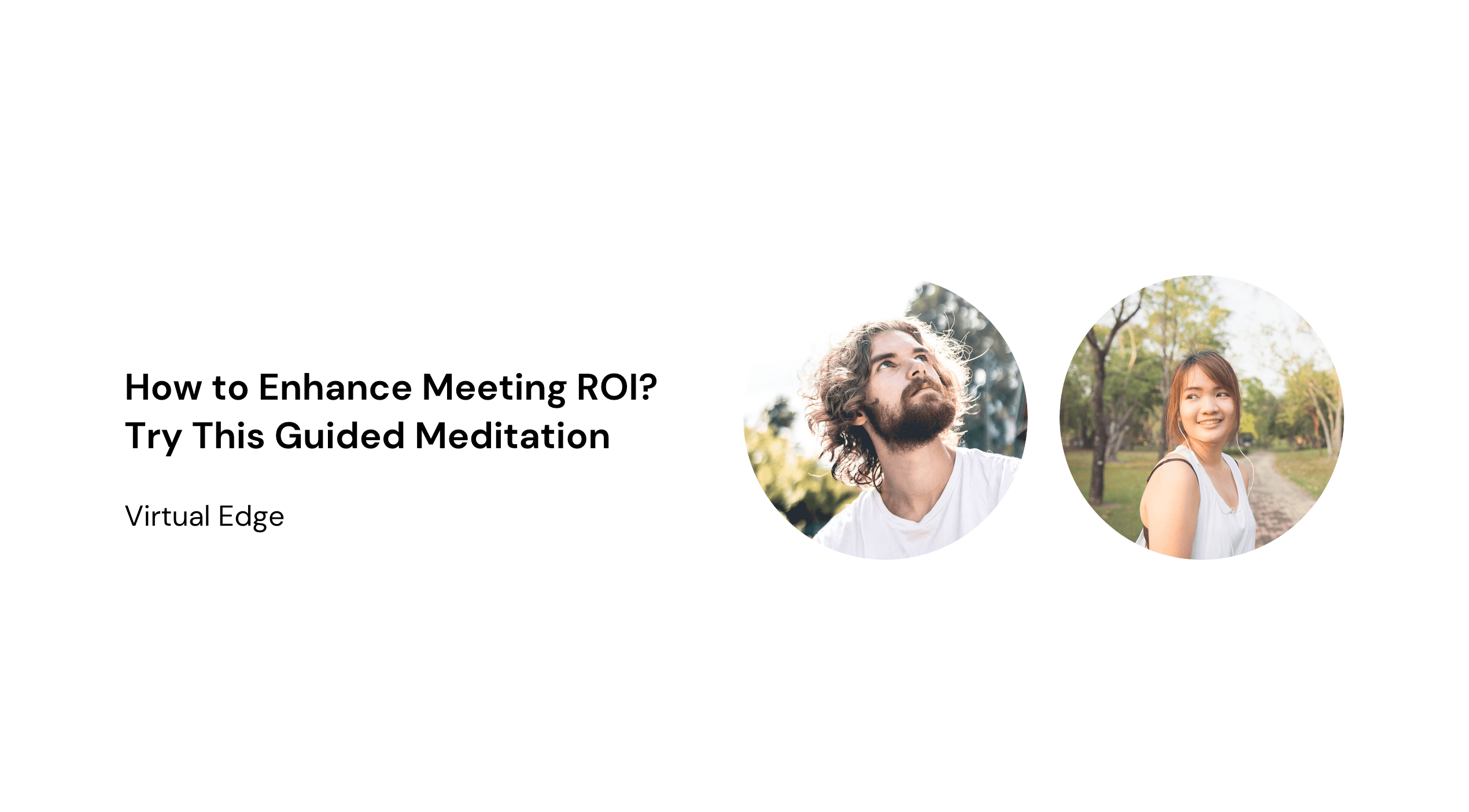Every meeting is an investment in time – one that that ideally yields a significant return. To enhance the ROI of meetings, plans often focus on preparing everything well with the exception of one vital component – the participants.
A recent study conducted by the Kyoto Convention Bureau explored the effects of preparing meeting participants with a brief meditation. James Kent, International Marketing Coordinator of the Kyoto Convention Bureau commented on the study. The hypothesis was to determine if learning outcomes could be improved by meditating prior to the educational session.
Does meditation really open minds? In fact, that’s exactly what it does. It slows down the chatter in your mind, releasing repetitive thoughts to create a space for new ones. In other words, meditation creates a relaxed mind that is more receptive to learning, which this study proved by testing memory retention
As a professional speaker who happens to be a former meditation instructor, I’ve always included meditation in my preparation for presentations. Though until learning of this study, I’ve never considered how it could be used to do the same for my audience.
Let’s take a look at how this can work.
Help Your Audience to Engage and Focus
There is a very significant benefit to group meditations that goes beyond relaxation and centering. It has been proven that it creates an environment where everyone is essentially of one mind. The scientists call this brain wave coherence. It is a shared state of mind, one that speakers instantly recognize when the audience is with them.
There are indeed many ways to engage an audience, with meditation being one of them. Meditation benefits not only the mind, but the body and spirit too. For this reason, some people incorrectly associate it with religions that may conflict with their own.
Thus, for general audiences it may be best to refer to meditation as a focusing exercise – which is what it really is. Meditation brings your attention inward. This is what allows you to release your thoughts from the previous meeting, or the one you are anticipating next – so that you can simply focus on the present one.
Understand the Expectations of Your Audience
Speakers understand it is essential to make the most of the first moments of a meeting – starting with energy and purpose. For this reason, I personally would not recommend starting your meeting with a meditation, opting instead to honor the of expectations of the audience by using traditional methods to initially engage them.
After making the most of those first few minutes, I can envision then taking full advantage of the engaged audience to try something new – a short exercise (that you may or may not call a meditation) that promises to help everyone get more from the meeting.
What comes after the meditation is something that could prove to be quite powerful – a second beginning. If you have every meditated you know that even a few minutes of meditation can dramatically create a new state of mind – one that is fresh and ready to learn.
A Universal Meditation Exercise
Traditional meditation involves the repetition of a mantra. The word mantra roughly translates as instrument of the mind – one that helps to create the desired mental state. A breath awareness meditation is a simple and universal approach in which the breath serves as the instrument.
Before beginning the group meditation, it is essential to make sure everyone is ready. In the context of a meeting, this means lightening things up – even using humor to relax the audience. Then, simply ask everyone for their permission to begin.
While the duration of the meditation in the Kyoto study was ten minutes, that will feel like a lifetime in our western culture. My experience as an instructor is that most people will notice a considerable settling down after just a few minutes of meditation.
Steps for a Guided Group Meditation.
After describing the exercise, ask everyone to get comfortable and assume good posture. While not necessary, it helps to slightly dim the lights.
Here are the words of the facilitator.
Close your eyes and allow your awareness to go to your breathing. Innocently observe your breath as you breathe in and out. (Pause)
As you observe your breath you may notice it changes – in speed, rhythm, and depth. It may even stop for a moment. Whatever happens, just continue observing it without expectation. (Pause)
From time to time your attention may drift to a thought in your mind, a sensation in your body, or a noise in the environment. Whenever you notice you are not observing your breath, simply bring your awareness back to your breathing. (Pause)
I’ll watch the time for the next few minutes and will let you know when to stop (wait 3 – 5 minutes)
Keeping your eyes closed, take your attention off of your breath and just remain silent for a moment. (wait 30 seconds)
Now slowly open your eyes. (bring the lights up)
You now have an audience that is not only relaxed, but open-minded and engaged.
Start slowly, but use this opportunity well to help your audience get the most out of your meeting.
